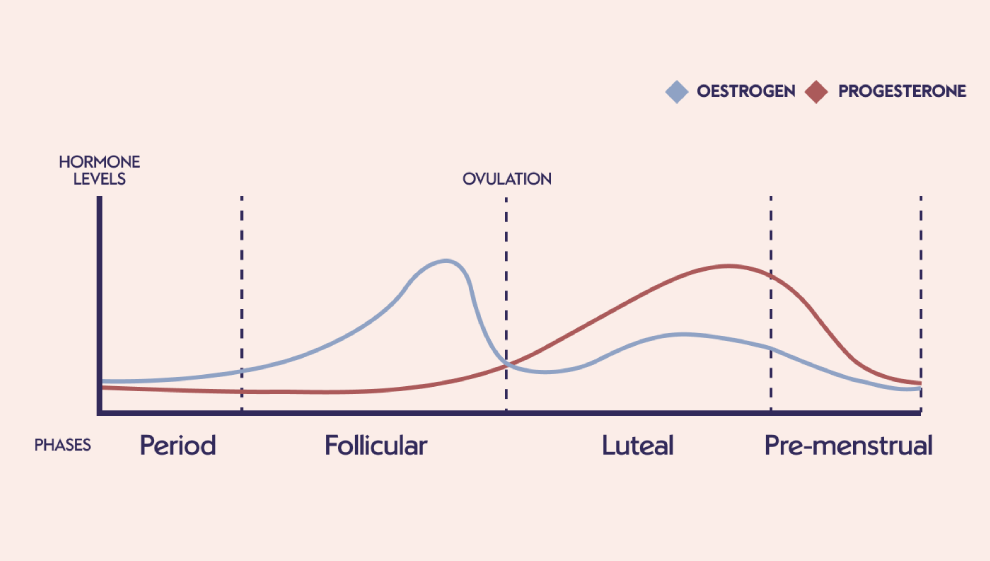
The menstrual cycle is a complex and fascinating process that plays a crucial role in the reproductive health of individuals assigned female at birth. This cyclical pattern is regulated by a delicate interplay of hormones and involves four distinct phases: menstruation, the follicular phase, ovulation, and the luteal phase. In this comprehensive guide, we will delve into each phase to shed light on the intricacies of the menstrual cycle.
Menstruation, also referred to as the period, is the first stage of the menstrual cycle. The uterine lining sheds during this period, which is caused by a decrease in progesterone and estrogen levels. The average menstrual cycle lasts three to seven days, though there are often variances. Menstrual blood is a mixture of blood, tissue, and uterine fluid, which is an important fact to remember.

That is when the follicular phase begins after menstruation. The maturation of follicles in the ovaries, each of which houses an egg, is what defines this stage. Estrogen is the main hormone that controls this period and it rises gradually. The uterine lining thickens as a result of this rise, maybe in anticipation of a pregnancy. The first seven to eleven days of the menstrual cycle are usually devoted to the follicular phase.
At the halfway point of the menstrual cycle, ovulation takes place, marking a significant turning point. When luteinizing hormone (LH) levels are high, the dominant follicle releases a mature egg. This egg awaits fertilization as it passes through the fallopian tube. The best likelihood of conception occurs during the 24-hour window that is known as ovulation. It is a brief but significant period of time.
The corpus luteal, a structure that develops from the remnants of the ruptured follicle, is the hallmark of the luteal phase, which occurs after ovulation. Progesterone, which is secreted by this structure, aids in the maintenance of the uterine lining during pregnancy. The corpus luteal disintegrates in the absence of fertilization, which lowers progesterone and estrogen levels. A new cycle begins with the commencement of menstruation, which is indicated by declining hormone levels.
Hormones of different kinds coordinate the complex dance of fertility during the menstrual cycle. The primary hormone generated by the ovaries, estrogen, controls the follicular phase and promotes the development of the uterine lining. Progesterone takes the lead throughout the luteal phase, preparing the uterus for a prospective embryo, while the LH surge initiates ovulation.
The usual menstrual cycle lasts approximately 28 days, however it can last anywhere from 21 and 35 days. But it’s important to understand that individual differences are common. The length and regularity of the menstrual cycle are influenced by a number of factors, including stress, health, and lifestyle choices.
People who are knowledgeable about the menstrual cycle are better equipped to make decisions regarding their reproductive health. Family planning and the early identification of potential reproductive health issues can be facilitated by monitoring cycles, identifying patterns, and being in tune with one’s body. Accepting that menstruation is cyclical can help people develop a stronger bond with their bodies and improve their general wellbeing.
Subscribe to Our Newsletter
Sr. No.38 Mantarwadi chowk, near Hp Petrol Pump, Pune, Maharashtra 412308
info@smilepad.in
+91 87670 04817
© 2023 Smilepad hygiene India Pvt. Ltd.
Created by paperfold.in
WhatsApp us